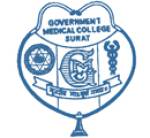 |  |  |
<html><center><font size=“+4”>Department of Physiology</font></center></html>
Goals
- The broad goal of the teaching of undergraduate students in Physiology aims at providing the student comprehensive knowledge of the normal functions of the organ systems of the body to facilitate an understanding of the physiological basis of health and disease.
OBJECTIVES
KNOWLEDGE
- At the end of the course the student will be able to :
- Explain the normal functioning of all the organ systems and their interactions for well coordinated total body function.
- Assess the relative contribution of each organ system to the maintenance of the milieu interior.
- Elucidate the physiological aspects of normal growth and development.
- Describe the physiological response and adaptations to environmental stresses.
- List the physiological principles underlying pathogenesis and treatment of disease.
SKILLS
- At the end of the course the student should be able to :
- Conduct experiments designed for study of physiological phenomena.
- Interpret experimental/investigative data.
- Distinguish between normal and abnormal data derived as a result of tests which he/she has performed and observed in the laboratory.
INTEGRATION
- At the end of the integrated teaching the student should acquire an integrated knowledge of organ structure and function and its regulatory mechanisms.
Faculty Members
Teaching Facilities
| LIBRARY CUM SEMINAR ROOM | |
|---|---|
| NOS | one |
| SIZE | 36 sqmt |
| CAPACITY | 15 persons |
| FACILITY | |
| BOOKS | 225 book in departmental library |
| INTERNET available in department as well as Central library | |
| DEMONSTRATION ROOMS | |
|---|---|
| NOS | 2+4 |
| SIZE | 69 & 60 sqmt EACH |
| ACCOMODATION | can accommodate 150 students |
| AUDIO VISUAL aids available includes | TV set,VCR,LCD projector,Slide projector,Amplifier system,OHP |
- MUSEUM
Widely spread throughout the department, i.e. various laboratories, demonstration rooms etc. There are charts displayed related to human Physiology, comparative Physiology, contributions of scientists etc…..Museum cupboard having various instruments which were formerly practiced.
LABORATORY
HEMATOLOGY
EXPERIMENTAL
CLINICAL
MAMMALIAN
RESEARCH
UG/PG Courses Offered with their syllabus
SYLLABUS
CURRICULUM OF Ist MBBS:
PHYSIOLOGY
- General Physiology
- Cell physiology
- Homeostasis
- Transport across cell membrane
- Biophysics-general principles
- Body fluid compartment
- Related topics & applied physiology
- Hematology
- Composition & functions
- RBC & Hb-structure ,function, synthesis
- WBC- structure,function,synthesis
- Platelet- structure,function,synthesis
- Immune system
- Hemostasis
- Related details & applied physiology
- Nerve & Muscle Physiology
- Nerve physiology
- Membrane potential
- Action Potential
- Muscle physiology
- Classification & molecular structure
- Muscle contraction-mechanism
- Related topics & applied physiology
- Excretory system
Anatomy(Kidney, Ureters , Bladder)
- Structure
- Functions
- Control
Functions of kidneys
- Homeostasis
- Body fluid regulation(ECF)
- Urine formation & regulation
- pH regulation
- Excretion of waste products
- Hormonogenesis
- Renin
- Erythropoietin
- Vit-D activation
- Body-temperature regulation
- Gluconeogenesis during starvation…
- Applied
Gastro intestinal tract
- Anatomy & function (GIT,Liver,Pancreas,Gallbladder…)
- Secretion
- Digestion
- Absorption
- Control of secretion
- Nervous
- Hormonal
- Higher centers
- Motility in GIT
- Mastication
- Deglutition
- Intestinal movements
- Defecation
- GI hormones
- Applied
- Vomiting
- Diarrhea
- Respiratory system
- Anatomy & functions
- Respiratory mechanics
- Pressure & volumes
- Compliance & Elasticity
- Work of respiration
- Resistance
- PFT
- Ventilation –perfusion
- Gaseous exchange
- Gas transport
- Regulation of respiration
- Applied Physiology
- Cardiovascular system
Cardiac system
Anatomy Cardiac cycle Heart rate Cardio dynamics Conduction system, ECG Coronary Circulation, Pulmonary & Systemic circulation Cardiac output Venous return
Circulatory system
Anatomy Hemodynamics Arterial pressure,Volume & regulation
Applied physiology
- Endocrinology
- General endocrinology
- Physical &Chemical characteristics Of hormones
- Mechanisms of Action
- Hormonal control system
- Hormone/gland description
- Structure
- Secretion
- Function
- Physiological effects
- Control
- Applied physiology
- Pituitary & Hypothalamic hormones
- Structure
- Secretion
- Function
- Physiological effects
- Applied physiology
- Thyroid gland
- Structure
- Secretion
- Function
- Physiological effects
- Applied physiology
- Parathyroid gland
- alcium metabolism
- Vit-D
- PTH
- Pancreas :Anatomy
- Glucagon
- Somatostatin
- PPfactor
- Insulin
- Adrenal gland
- Cortical hormones
- Medullary secretion
- Reproductive Physiology
Male reproductive system
- Anatomy
- Secretion by testis ,Spermatogenesis
- Function
- Physiological effects
- Control
- Applied physiology
Female reproductive Physiology
Non-pregnant Stage
- Anatomy
- Secretion
- Uterine sexual cycle
- Oogenesis
- Control
- Applied physiology
Pregnancy
- Hormones
- Changes during pregnancy
Lactation
- Nervous system
Anatomy & Histology of Brain (Fibers in CNS) Synapse Neurotransmitters Reflexes Receptors CSF ANS
- Receptor
- Sympathetic system
- Parasympathetic nervous system
Sensory system
- Receptors
- Properties
- Pathways
Motor system
- The Pyramidal System, Major voluntary Motor, Crosses in Medulla
- The Extrapyramidal System
Spinal cord
Cerebral cortex
Corpus Callosum
The Basal nuclei (ganglia)
Caudate nucleus
The limbic system
Thalamus
Hypothalamus
Pons
Medulla Oblangata
Cerebellum
EEG & Sleep
Learning & memory
Cranial nerves
Special senses
Hearing
Vision
Taste
Olfaction
CME and Workshops
| …….. |
Publications
| ……. |










